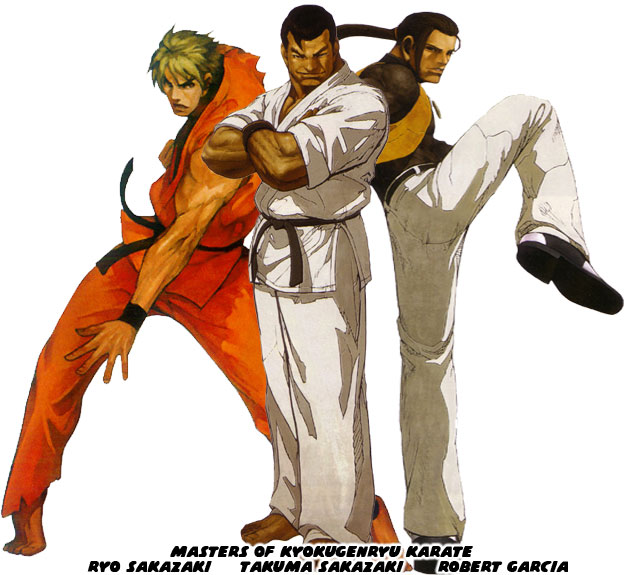
The masters of Kyokugenryu "Extreme Utmost Limit Way" Karate had very similar moves to both Ken and Ryu, including a leaping kick, rising uppercut and fireball attack. Arcade audiences saw these as the SNK version of the hurricane kick, dragon punch and fireball. Even the button and joystick moves required to perform these attacks were very similar to the control scheme created by Capcom. The artists and programmers working on the Street Fighter II updates didn't take too kindly to the AoF. When they were working on updated character art they made sure to let fans and SNK know exactly what they thought of their new fighters. Sagat was presented holding the head of a defeated opponent. Players could see blood, a dislocated elbow and a costume that was eerily similar to Ryo's but with the black hair and ponytail of Robert. The shots were fired but it didn't end there. A few years later they decided to make good on their comparison and created a sprite of the same character that would be featured in Sagat's opening animation. This defeated figure would become to be known as Gou Hibiki. Sagat was now going through the Street Fighter universe fighting all the karate masters so that he could gain an edge against Ryu. He killed Gou in the fight and that started a new round of shots aimed at SNK.
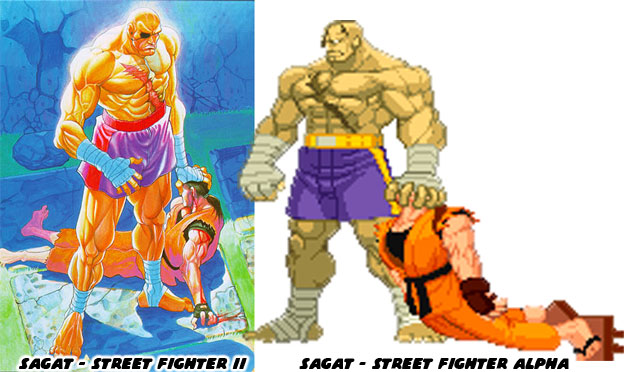
When Capcom was creating the intro animation for Sagat they had a bigger goal in mind. They were going to introduce an entirely new karate fighter into the universe. Someone who was an amalgamation of the two AoF stars. The result was Dan Hibiki, a square-jawed, long-haired karateka that appeared in Street Fighter Zero / Alpha in 1995. He wore pink because the color was somewhere in between Ryu's white and Ken's red gi. At first audiences didn't know what to make of him. In the original arcade release he could only be unlocked if you knew a secret code. This was rare for a Capcom fighting game, and especially for a Street Fighter title. The studio tended to shy away from time-release characters or secret characters for fear of upsetting the balance they had worked so hard to achieve. In the end it worked in favor of this new character. Dan was hopelessly underpowered when compared to the other fighters and this was all on purpose. His one-handed fireball didn't travel very far across the screen. Nor did his leaping triple kick or uppercut strike. It was obvious that Capcom was telling the team at SNK exactly what they thought of Kyokugenryu practitioners and their moves. Serious competitive players tended to stay away from Dan while the rest of the community chose him because of his unique move set.
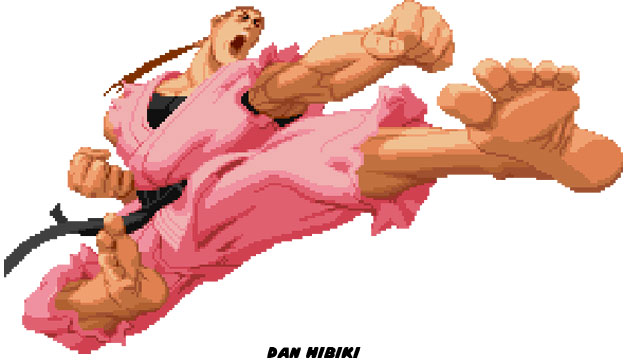
Dan was not the only character that Capcom was calling out. Sakura, who would become the most popular new character, was designed to be a girl version of Ryu. Yet even this character was not completely original. In the original Art of Fighting both Ryo Sakazaki and Robert Garcia were after Mr. Big and Mr. Karate because the young Yuri Sakazaki had been kidnapped. In the end she revealed that Mr. Karate was Takuma Sakazaki, the father of Ryo and herself. In 1994 SNK released a sequel which now made Yuri a playable character. The little sister had her own variation of the Kyokugenryu moves, they were not as strong as the men's attacks but were much faster. She even had her own unique look. Rather than wearing a traditional gi, she wore the top but mixed it with more contemporary leggings and sneakers. The design of her and her brother remained fairly consistent over the next 20 years. The sprites evolved, the aesthetics between games changed as new art directors were brought on board but very little changed between the siblings.
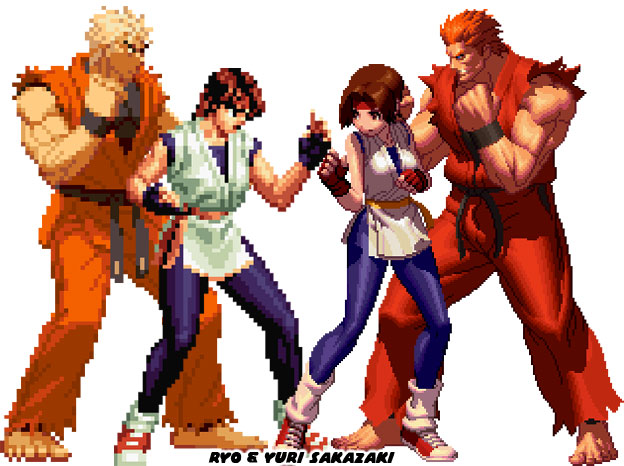
Street Fighter Zero / Alpha had gotten off to a great start but it felt lacking. Capcom revised it, added some familiar faces from Final Fight, the original Street Fighter and Street Fighter II. The newest face, Sakura, was the breakout star. She debuted in Street Fighter Zero 2 in 1996. Long-time fighting game fans saw the inclusion of Dan and Sakura a sort of jab at Ryo and Yuri. After all, if Capcom was going to call out their rival in a game why not go for broke? Yet there was a certain charm to the pair that was undeniable. They were far more than parody characters, they were far more than clones of SNK fighters or derivative Street Fighters. They were instead a blend of different influences that worked within Street Fighter continuity. Dan was the overly dramatic rival to Sagat, like a movie character he was driven by an intense feeling to avenge the death of his father. Dan was someone who was so outclassed he didn't even realize it. He also idolized his father and his fighting form "Saikyo-ryu" aka the "Strongest Style" even though it didn't stand up to the other forms in canon. Sakura on the other hand did not hail from a martial arts family. Her parents were regular people and little brother enjoyed playing video games more than anything. Her stage was even set in her own backyard instead of some fancy building , which reinforced that idea that she came from a regular household She was driven by a desire to achieve greatness and patterned her life after Ryu, her hero. She came a long way despite a lack of formal training and Dan decided to insert himself into her training routine even if she was technically a greater fighter. The inclusion of these two added some dimension and humor to a sometimes overly-serious plot. It didn't take long for the new characters to be embraced by the community. Fans all around the world drew art and used cosplay to let Capcom know how much they enjoyed these faces.
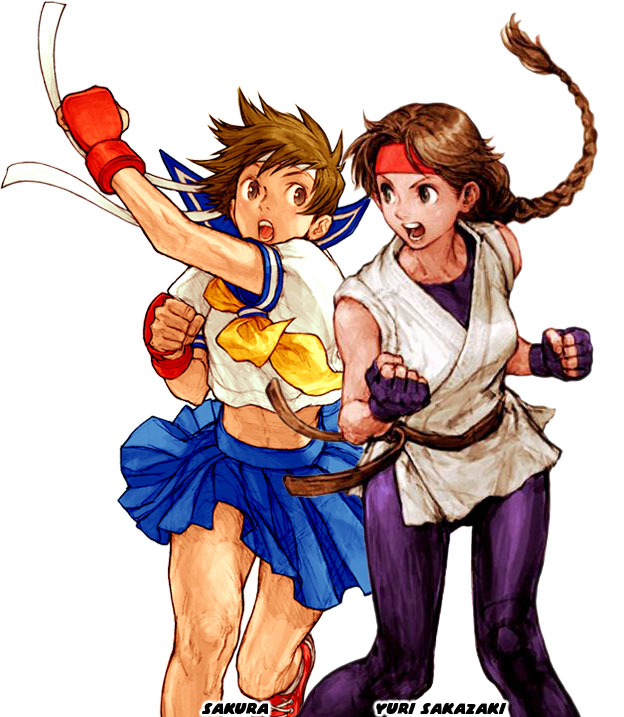
SNK should be remembered for their many, many, many contributions to the fighting genre. They are sometimes overlooked for how they changed the roles of female characters in fighters. Mai Shiranui from Fatal Fury / King of Fighters fame was arguably the most famous female character designed by the studio. She was the busty ninja that left little to the imagination. In the pantheon of female stars was was second only to Chun-Li in international fame. Yet Mai was far from being the only notable character created by the studio. King, who also debuted in the original Art of Fighting way back in 1992 was important for being the first androgynous character. Modeled loosely on the martial artist and action film star Cynthia Rothrock the blond striker was a force to be reckoned with. King would become more feminine in every subsequent game but in her original appearance players assumed that she was a effeminate young man. They thought that anyhow until her jacket top was torn, revealing that she had taped down her breasts to be a bouncer. Yuri was neither the sexy archetype, nor was she the tomboy but instead something in-between. She was a girl trying to be more than a girl version of her brother. She was trying to find her own voice and fit into the series.
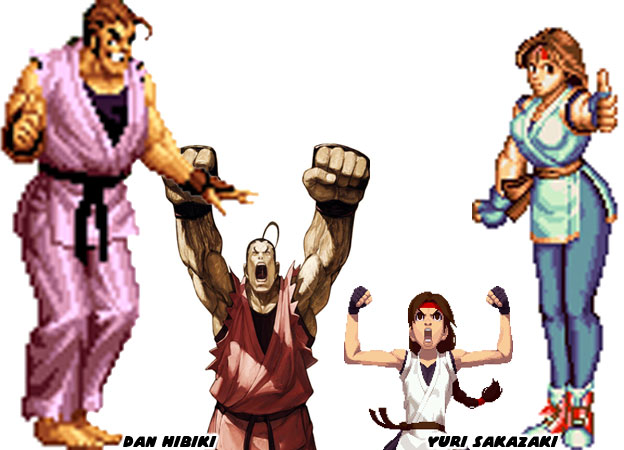
Sometimes Yuri would be a little too enthusiastic, a little too vocal of her superior techniques. The team at Capcom picked up on these cues and instead of assigning them to Sakura they placed the mannerisms on Dan, which made him all the more comedic. Audiences could appreciate what the developers were going for with Yuri. She was the young upstart, eager to show the world what she was made of. Maybe she got herself into hot water but the other females in the series were often there to help out just as much as the male stars. Players could tell that when Yuri matured she would become a force of nature. The designers at SNK had a unique approach to the genre and the lessons they learned from their male cast would help color their female counterparts. We'll explore one of these characters in the next blog. I hope to see you back for that. As always if you enjoyed this blog and would like to sponsor me please visit my Patreon page and consider donating each month, even as little as $1 would help make better blogs and even podcasts!

No comments:
Post a Comment